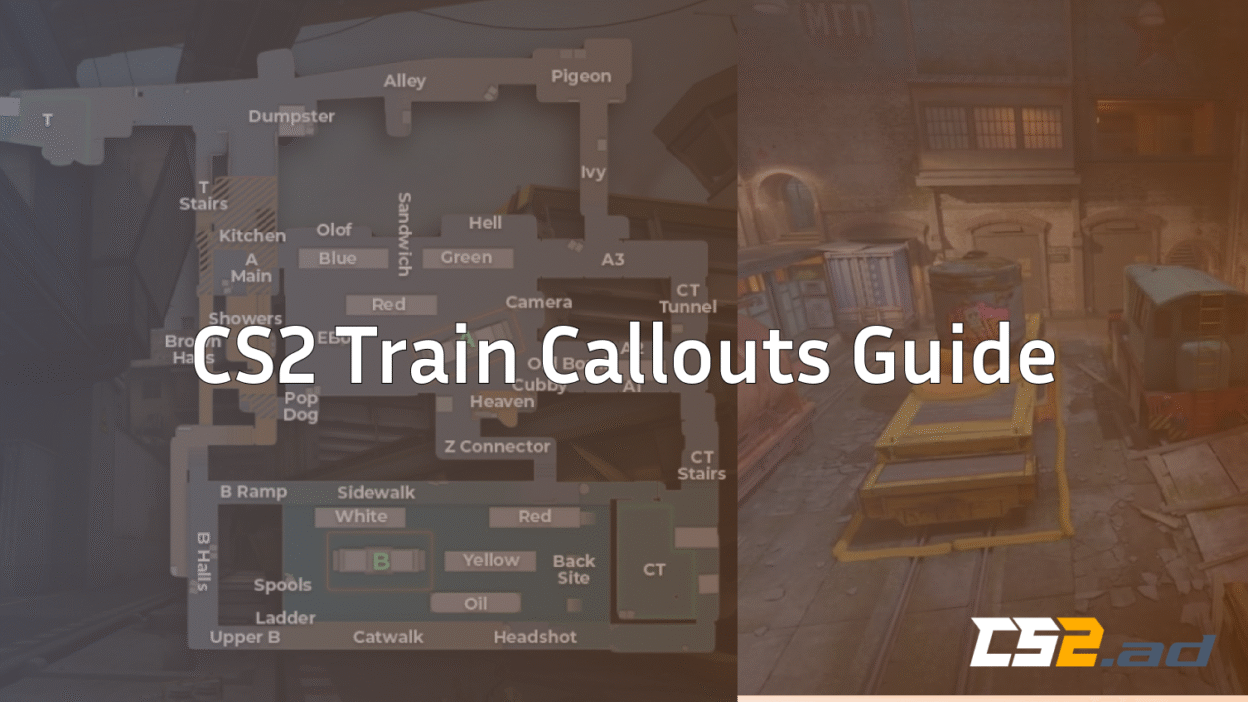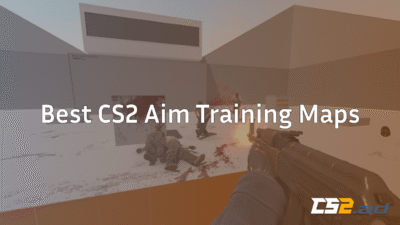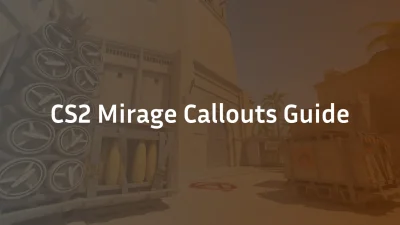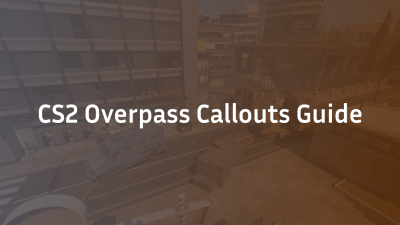If you want to dominate on the Train map in Counter-Strike 2 (CS2), you need one key skill — map communication. That’s where train map callouts come in.
In this guide, you’ll learn every important CS2 Train callout, how to use them like the pros, and what’s changed in the new Train callouts version.
This blog follows Google’s SEO Starter Guide and content essentials for helpful, user-first writing.
If you’re exploring other maps, check out our detailed breakdowns like
CS2 Mirage Callouts and
CS2 Nuke Callouts.
Why Train Callouts Matter
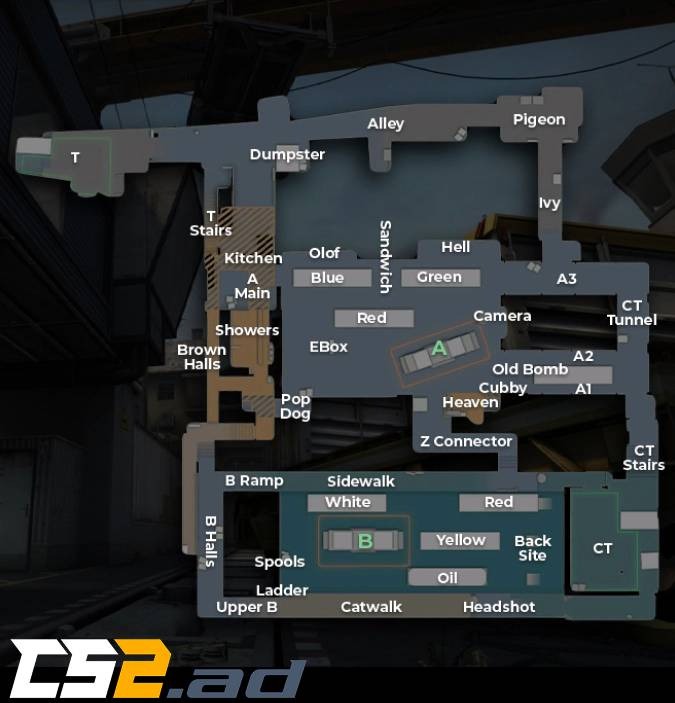
Train is one of the most tactical maps in CS2. Each second of communication counts — and a single mistimed callout can lose the round.
Here’s why learning Train callouts CS2 matters:
- Faster rotations – Saying “one pushing Ivy” instantly alerts your team to reposition.
- Smarter utility – Use smokes and mollies precisely: “Molly Hell”, “Smoke E-Box”.
- Stronger teamwork – Clear, concise callouts = coordinated entries and retakes.
- Updated for CS2 – Some areas changed in the Source 2 version, meaning you’ll need to use the new Train callouts for better clarity.
If you want smoother team coordination overall, also check our Best CS2 NVIDIA Settings and CS2 Video Settings Guide.
Train Map Overview
Here’s how the Train map layout breaks down.
It’s designed around two bomb sites (A & B), separated by narrow lanes, tall train cars, and tight choke points.
| Zone | Description | Common Callouts |
| T Spawn → A | Main route for Ts to reach A or push Ivy | T Spawn, A Main, Alley, Pigeon, Ivy |
| T Spawn → B | Path to B via T Stairs and B Halls | T Stairs, Brown Halls, Showers, B Ramp, Upper B |
| A Site | Large open yard with multiple trains | Red Train, Yellow, Green, Hell, Olof, E-Box |
| B Site | Compact site with tight trains and entry angles | Bomb Train (B), Blue, Orange, Ladder, Catwalk |
| Rotations | Connects both sites | Connector (Z), CT Spawn, Underpass, CT Stairs |
Each callout helps you communicate enemy positions quickly, especially during retakes or eco-rounds.
Want to explore more tactical maps? Read our
Vertigo Callouts CS2
Anubis Callouts CS2.
A-Site Callouts (Attack & Defense)
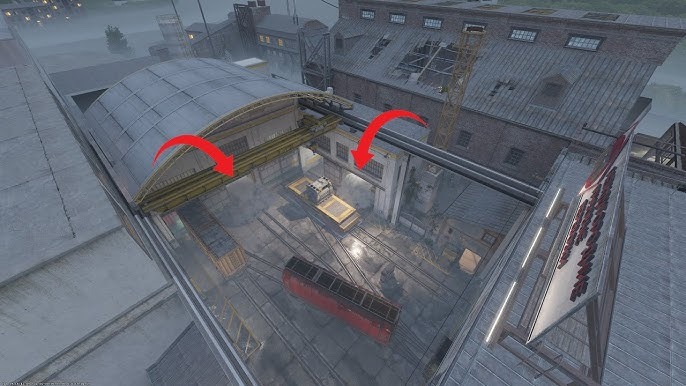
A-Site is iconic — open spaces, tall trains, and plenty of cover. You’ll need to know each angle to win fights here.
Key A-Site Callouts
| Callout | Description |
| A Main | Primary T-side entry; usually first contact zone. |
| Ivy | Long corridor for flanks or double entries. |
| Red Train | Central train on A; main plant cover. |
| Yellow Train | Far-side train toward CT Spawn. |
| E-Box | Electric box near A Main; good cover spot. |
| Hell | Low cubby near CT Spawn; common CT position. |
| Olof | Box near wall; named after Olofmeister. |
| A Heaven / Rafters | Upper view over site (now smaller in CS2). |
Pro Tip: Watch how ZywOo’s CS2 Settings enhance visibility on Train — useful when defending A from long angles.
B-Site Callouts (Attack & Retake)

The B-site on Train is tighter, darker, and built for clutch plays. Perfect for lurking or surprise entries.
| Callout | Description |
| B Halls / Brown Halls | T-side prep area before the push. |
| B Ramp / Lower B | Direct ramp into the bomb site. |
| Upper B / Catwalk | Higher ledge; great for AWPs or fakes. |
| Bomb Train (B) | Main plant train; central focus area. |
| Orange Train / Blue Train | Alternate cover trains for post-plant. |
| Back Site / Ladder | Deep CT-side defense area. |
| Sidewalk | Narrow connector from ramp to site. |
Rotation Tip: Use Connector (Z) to rotate between A and B — CTs rely on this heavily.
To improve crosshair placement here, see our CS2 Crosshair Guide.
Rotations, Connector, and Mid Control
- Connector (Z) – Core link between both bombsites. Losing it means losing fast rotations.
- Underpass – Newer corridor replacing the old Popdog in CS2.
- CT Spawn / CT Stairs – Defensive rotations and retake entry points.
- Alley / Pigeon – Wide back routes for sneaky flanks.
Train has always been CT-sided, much like Nuke and Overpass.
If you’re new to competitive strategy, our CS2 Beginner Guide explains CT/T balance perfectly.
What Changed in CS2? (New Train Callouts)
The new Train layout in CS2 brings several subtle but important tweaks:
- Popdog replaced – The old ladder room is now a smoother corridor (Underpass).
- Lighting & visibility – CS2’s Source 2 engine improved sightlines; use brighter CS2 Video Settings for better clarity.
- Heaven & rafters adjusted – Smaller angles make it harder for AWPers to dominate.
- Train spacing updated – Better navigation but different grenade lineups.
If you love exploring redesigned layouts, you’ll also enjoy your next read: CS2 Surf Maps.
How To Learn Train Callouts Fast
Here’s a mini system that works:
- Practice alone – Load a private match and walk through each callout while saying them aloud.
- Use binds – Try CS2 Practice Commands to freeze bots or restart rounds.
- Watch demos – Use the CS2 Demo Viewer Guide to replay pro rounds.
- Repeat in team play – Use correct names in every round, even if casual.
- Combine with utility – “Smoke E-Box, Flash Hell, push Red Train” — clear and effective.
If you ever want to replay or fast-forward demos to analyze callouts, see How To Fast Forward CS2 Replay.
Quick Cheat Sheet (For Fast Reference)
T-Side Routes
- T Spawn → A Main → Red Train → Plant
- T Spawn → Brown Halls → B Ramp → Bomb Train (B)
CT-Side Defense
- Hold Ivy & A Main early
- Anchor B Ramp / Ladder
- Rotate via Connector / CT Stairs
Hotspots to Remember
A Main • E-Box • Hell • Ivy • Red Train • Olof • Ladder • B Ramp • Sidewalk • Connector
Frequently Asked Question (FAQs)
1. What are callouts on the Train map in CS2?
Callouts on the Train map in CS2 are short location names that players use to quickly communicate enemy positions, rotations, or bomb plants. Examples include A Main, Ivy, E-Box, Connector (Z), and B Ramp. Learning these helps you coordinate faster with teammates and improve your map awareness.
If you’re new to team comms, check out our CS2 Beginner Guide.
2. What’s new in the Train callouts for CS2 compared to CS:GO?
In CS2, the Train map has updated visuals and layout tweaks. The old “Popdog” has been replaced by Underpass, lighting and visibility have improved, and Heaven angles were reworked. These changes make the new Train callouts more accurate for Source 2 gameplay.
You can see similar reworks in our CS2 Nuke Callouts and Anubis Callouts Guide.
3. What are the most important callouts to remember on Train?
Some of the most common and critical Train callouts CS2 players use are:
- A Site: A Main, Ivy, Red Train, E-Box, Hell, Olof
- B Site: Brown Halls, Upper B, B Ramp, Bomb Train, Sidewalk
Knowing these helps during clutch plays and team rotations. You can learn more about effective communication in our CS2 Voice Settings Guide.
4. How can I practice Train callouts effectively?
You can practice CS2 Train callouts by walking through a private match and verbally repeating each area name. Use CS2 Practice Commands to spawn bots or restart rounds. Watching demos via the CS2 Demo Viewer also helps you observe how pros communicate on Train.
5. Is the Train map still in active rotation in CS2?
Train isn’t always in the active competitive map pool for CS2, but it remains popular in community servers and custom matches. Even when out of rotation, learning Train map callouts improves your overall tactical skills and awareness. You can check current status updates in our CS2 Server Status Guide.
Final Thoughts
Mastering Train callouts CS2 isn’t just about memorizing names — it’s about game sense, timing, and teamwork.
Once you internalize these callouts, you’ll move faster, react quicker, and win more rounds.
Keep building your map knowledge — start next with
CS2 Dust 2 Callouts
or
CS2 Inferno Callouts.
And if you’re chasing performance perfection, read our
Best CS2 NVIDIA Settings
and
CS2 Video Settings
